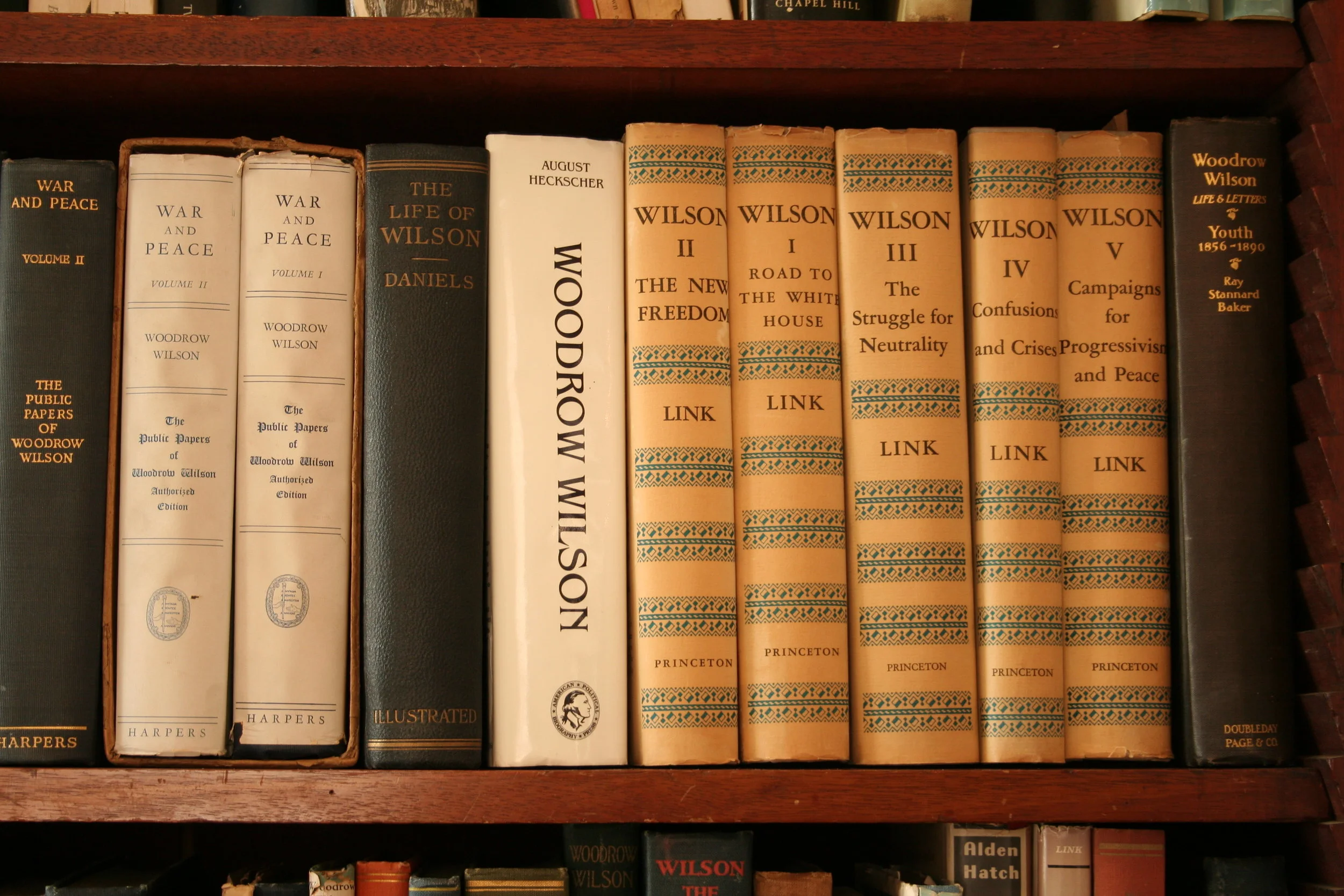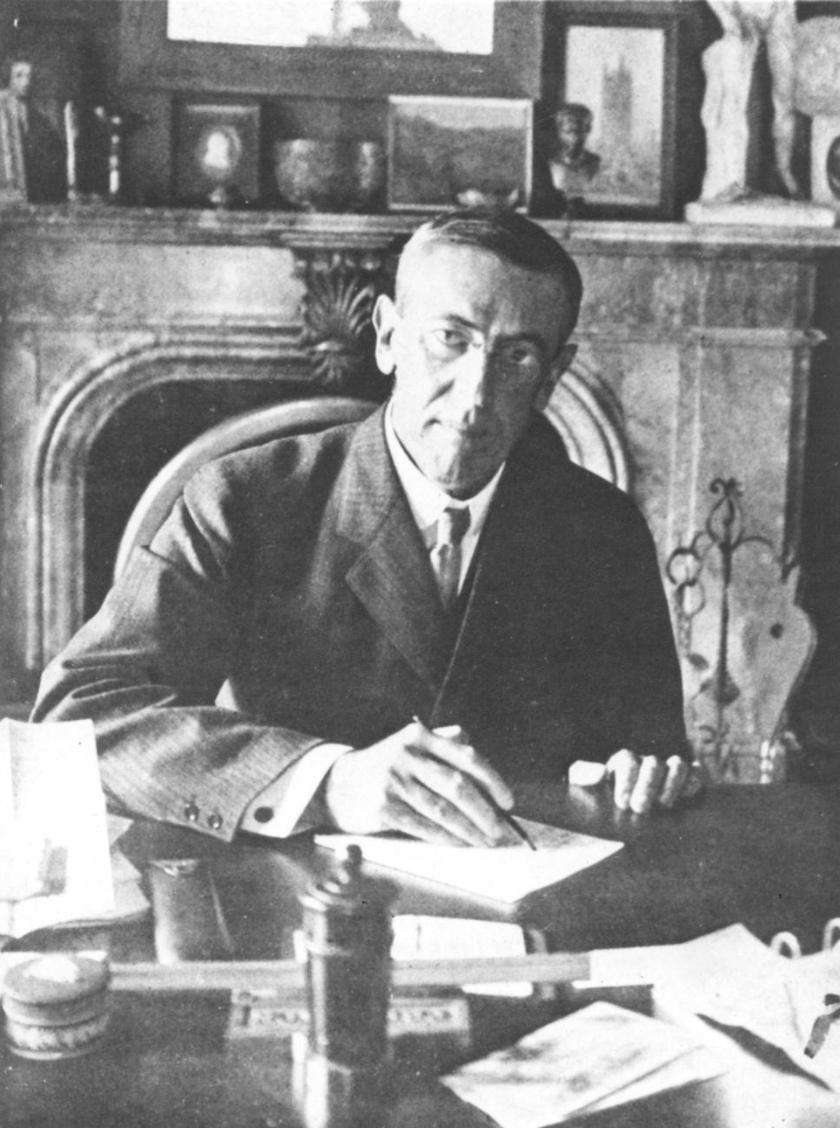Woodrow Wilson, Veterans Day, and the Tomb of the Unknown Soldier
/One of the most visited sites in Arlington National Cemetery is the Tomb of the Unknown Soldier. The story of this monument to America’s unidentified war casualties begins during the presidency of Woodrow Wilson. In WWI, over 100,000 American men lost their lives. This presented a challenge to the United States military, who had set a precedent for expatriating the remains of fallen soldiers back to American soil during the Spanish American war when there were only around 3,000 casualties. New systems for burial of the dead ensured that there was better identification, but a couple thousand soldiers remained unidentified.
Following the war, the French and British governments wished to honor the many casualties and provide some consolation for their families, especially in those cases where the body could not e located or identified. Furthermore, the French and British chose to bury their war dead near the battlefields, rather than expatriating their remains. To give families a local place of commemoration, they selected one unidentified man’s body to inter with great honor and ceremony. In Britain, the unknown soldier was laid to rest in Westminster Abbey, while the French unknown was buried at the foot of the Arc de Triumph.
Although the United States military was able to identify more casualties than in previous wars, thanks to identification discs (the precursor to the dog tag) and official protocols for temporary battlefield internment of the dead, there were still many thousands of unidentified bodies and thousands listed as missing in action. About 2,000 soldiers whose bodies were identified were expatriated to the United States for reburial at the request of their family members. However, many families were left with being unable to visit or even know the location of their loved one’s final resting place.
It was in response to this tragic situation, and inspired by the memorial commemorations of France and Great Britain, that Congressman Hamilton Fish III (R-NY), himself a WWI veteran, introduced a resolution in Congress for the “bringing to the United States of a body of an unknown American… and for the burial of the remains with appropriate ceremonies”. Introduced on December 21st, 1920, the resolution was approved by Congress on March 3rd, 1921. The following day, President Woodrow Wilson signed the resolution, just before handing over his office to incumbent Warren G. Harding, who was inaugurated later in the day.
Back in France, United States military personnel began the selection process for the representative unknown soldier. After exhuming one unidentified body from each of the four major areas of conflict in France, the four coffins were taken to the city hall of Chalons-sur-Marne (now called Chalons-en-Champagne). There, an enlisted man with an outstanding service record, the twice-wounded Sergeant Edward F. Younger was honored with the task of selecting one body for ceremonial reinterment in the United States. In a November 8, 1936 newspaper article for “This Week”, Sergeant Younger recalled this profound and humbling experience. Stunned by his momentous task, Younger said that, “For a moment I hesitated, and said a prayer, inaudible, inarticulate, yet real.” Then he began to slowly march around the four coffins. “Three times I walked around the caskets; then something drew me to the coffin second to the right on entering” Younger remembered. “It seemed as if God raised my hand and guided me as I placed the roses on that casket.” Thus, America’s Unknown soldier was chosen!
Sergeant Edward F. Younger at the Tomb of the Unknown Soldier, c. 1930 (Library of Congress)
Former president Woodrow Wilson and Edith Wilson ride in the procession of the Unknown Soldier, November 11th, 1921
The other three bodies were honorably reinterred at American cemeteries in France, while the remains of the chosen soldier was placed onboard the USS Olympia and embarked for home with a 17-gun salute by the French navy.
When the Unknown Soldier finally arrived in Washington D.C., the coffin lay in state on the Lincoln catafalque in the Capitol building while over 90,000 people came to pay their respects. On November 11th, 1921, now known as Veterans Day, a great procession followed the caisson bearing the Unknown Soldier to Arlington National Cemetery, where President Warren G. Harding attended the ceremony and burial service. Former president Wilson was part of the parade going to the cemetery, but he returned to his house and did not attend the service due to his health.
For so many grieving American families, the Tomb of the Unknown Solder provided them with a place to remember and honor their missing loved ones. Beyond that, it is a national symbol of the respect we pay to those fallen in defense of our country.
It is fitting that President Wilson should have been instrumental in establishing the Tomb of the Unknown Soldier. Although never a soldier himself, he had vivid childhood memories of the suffering of the American Civil War. He always showed concern and respect for the veterans of WWI who he encountered. In the words of his physician and confidante, Dr. Cary T. Grayson, “He could seldom refer to them without emotion. He believed that they fought for the greatest cause of battle that the world has ever known, and he believed they constituted the greatest army in the history of warfare. They were his ‘comrades’.” President Wilson’s ideals of honor for the service of the American military remain visible to the daily visitors at Arlington National Cemetery who come to pay their respects at the Tomb of the Unknown Soldier. It has become a place of memory for all Americans and especially those who have lost loved ones in defense of their homeland.
Sergeant Younger recognized the personal connection the unknown soldier has to his fellow countrymen by virtue of his anonymity.
“Like many who were in the thick of the fighting, I helped bury the bodies of hundreds of my buddies under fire. Many of them could not be identified. Could the hero I chose have been one of these?....[S]omehow I hope he was.”
Works Referenced:
“A Brief Timeline of the History of the Tomb of the Unknown Soldier”. United States Army. https://www.army.mil/tomb/pages/history.html
Frank, Tim. “A Humble Sergeant: Edward F. Younger and the Unknown Soldier”. Arlington National Cemetery, October 20, 2021. https://www.arlingtoncemetery.mil/Blog/Post/11465/A-Humble-Sergeant-Edward-F-Younger-and-the-Unknown-Soldier
Grayson, Rear Admiral Cary T. An Intimate Memoir. Washington: Potomac Books. 1977.
Harris & Ewing, photographer. Tomb of Unknown Soldier, Arlington National Cemetery, Arlington, Virginia. Arlington Virginia United States, 1930. [May or June] Photograph. https://www.loc.gov/item/2016878845/.
“Key Dates in the History of the Tomb of the Unknown Soldier”. Society of the Honor Guard. https://tombguard.org/news/article/key-dates-in-the-history-of-the-tomb-of-the-unknown-soldier
Sixty-Sixth Congress, Session III, Chapters 174-176, 192. https://uscode.house.gov/statviewer.htm?volume=41&page=1447
“The Tomb of the Unknown Soldier”. Arlington National Cemetery https://www.arlingtoncemetery.mil/Explore/Monuments-and-Memorials/Tomb-of-the-Unknown-Soldier
Van Ells, Mark D. America and WWI: A Traveler’s Guide. Northampton, MA: Interlink Books, 2015.
Younger, Edward F. “I Chose the Unknown Soldier.” This Week, The Cincinnati Enquirer. November 8, 1936. https://www.newspapers.com/image/100330721/?match=1&terms=edward%20younger






